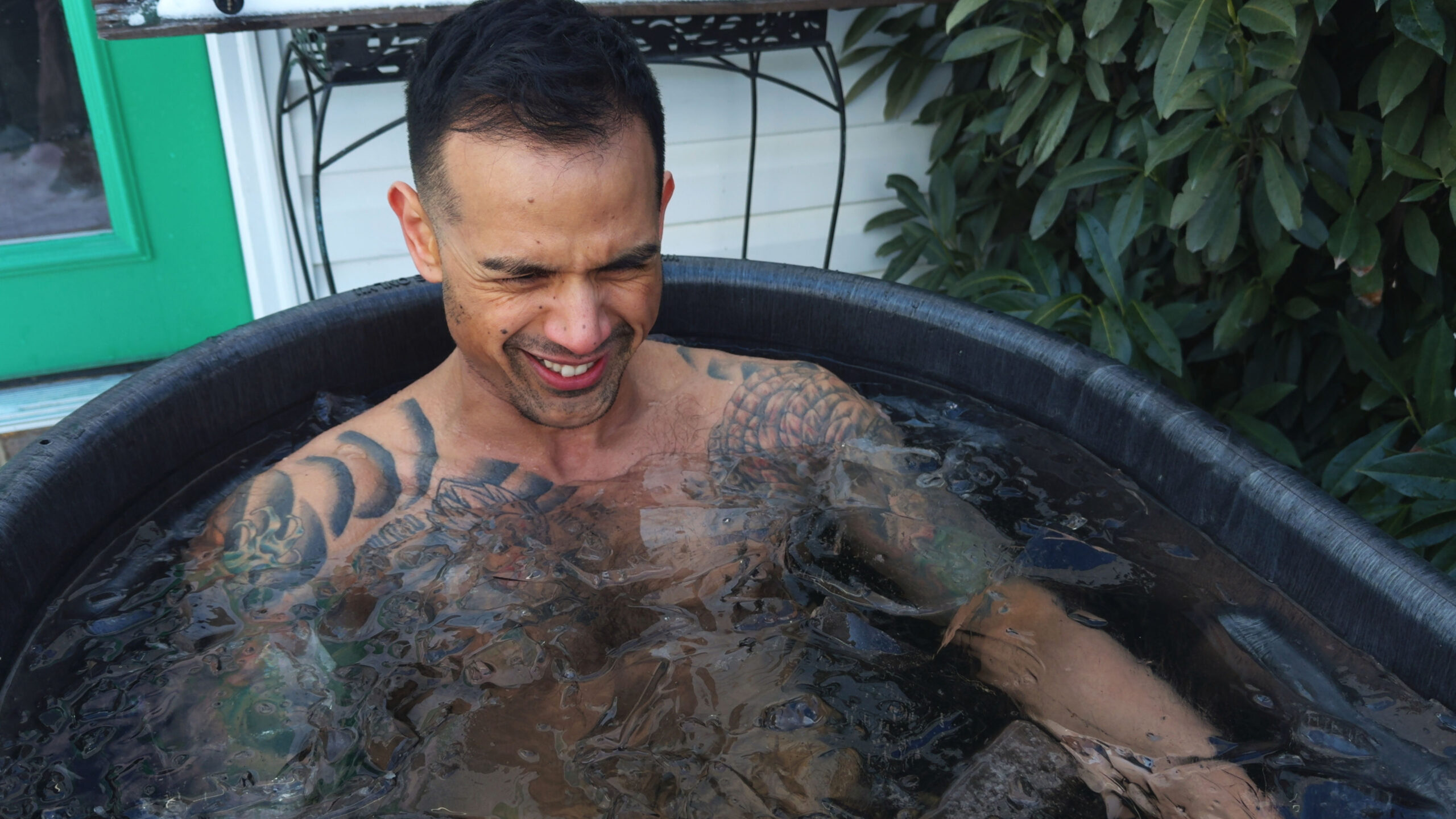
Cold Plunge for Strength & Resilience: The Science & Benefits
Discover how cold plunges may enhance strength and resilience by reducing inflammation, alleviating sore muscles, and improving mood through the power of frigid water.
Why You Should Consider Cold Plunging (Even If You Hate the Cold!)
Ever thought about willingly dunking yourself into freezing water? Yeah, neither did us. We’re diving into the world of cold plunging—why it’s a game-changer for your body and mind, and whether it’s worth the icy discomfort.
The Health Benefits of Cold Plunging
Cold plunging isn’t just about shocking your system; it has incredible health benefits. Here are the top three reasons to take the plunge:
1. Boosts Mental Resilience
Forcing yourself into freezing water triggers your fight-or-flight response. Your body panics, but you train your nervous system to handle stress better by staying in and controlling your breath. Over time, this builds mental toughness—think of it as strength training for your brain.
2. Increases Alertness and Energy
Ever wish you could wake up without chugging three cups of coffee? Cold plunging can naturally boost your energy levels by increasing dopamine (by 250%!) and adrenaline. Studies even show that it’s more effective than caffeine or nicotine, with the effects lasting for hours. Plus, cold therapy has been linked to an improved mood by balancing stress hormones and increasing endorphins.
3. Supports Metabolism and Fat Loss
While cold plunging alone won’t turn you into a fat-burning machine, it does help convert white fat to brown fat, which is more metabolically active. This can help your body burn calories more efficiently over time. Plus, cold water immersion has been shown to improve circulation and reduce inflammation, making it an excellent recovery tool. If you’re looking for an additional way to reduce body fat, cold plunging can be a great complementary practice.
The Benefits and Risks: Who Shouldn’t Cold Plunge?
Before you run to fill your tub with ice, let’s discuss precautions. If you have a heart condition, Raynaud’s disease, cryoglobulinemia, or cold urticaria, cold plunging may not be safe for you. Also, if you’re new to it, don’t jump straight into freezing temperatures—start with warmer water around 50-60°F and work your way down. Gradual exposure can help your body adapt better and minimize shock.
When’s the Best Time to Cold Plunge?
- If you lift weights and want muscle growth, wait at least four hours post-workout before plunging. Cold water can blunt muscle-building responses if done too soon.
- If you’re an endurance athlete, you can cold plunge right after a workout to aid recovery and reduce soreness. Many athletes use cold therapy to help with sore muscles and speed up healing after intense training sessions.
Cold Plunge vs. Cold Shower: Which Is Better?
Cold showers are great, but they don’t provide the same full-body immersion benefits as a cold plunge. In a plunge, the water fully surrounds your body, helping activate brown fat and maximize the effects. When you submerge yourself in cold water completely, your body adapts faster to the shock of the cold water, making the experience more effective. If you’re serious about cold exposure, a cold plunge is the way to go.
How to Set Up a Cold Plunge at Home
If you’re interested, you don’t need to invest in an expensive plunge tub. My wife and I got a big tub from a farm supply store for about $100 and filled it with ice and water. Simple and effective! A DIY cold plunge at home is an affordable way to experience all the benefits without breaking the bank. If you want to try a more traditional approach, an ice bath or cold bath can offer similar effects at home without requiring a dedicated setup.
Pro Tips for Your First Cold Plunge
- Breathe properly: Take two nasal inhales and a long exhale through your mouth to stay calm.
- Move your limbs: This helps break the thermal barrier and enhances the cold exposure.
- End with cold: Avoid hopping into a hot shower immediately if you want the full metabolic benefits.
- Air dry: For an extra challenge, skip the towel and let your body naturally warm up.
- Monitor your body temperature: Cold plunging can quickly drop your body temperature, so make sure to warm up gradually after your session.
Final Thoughts: Is It Worth It?
Cold plunging isn’t just a fitness trend—it’s a powerful tool for mental and physical resilience. It’s worth considering whether you’re looking for a natural energy boost, stress reduction, heart health improvements, or recovery aid. Just start slow, listen to your body, and embrace the chill! If you’re still hesitant, take a plunge into a cold bath first to ease into the practice.
Transcript
Today we’re gonna go over the benefits of cold plunging and you’re gonna get to see a video of me shivering kind of like I am a little bit right now post-plunge. Steve, have you ever cold plunged before?
Continue Reading
Heck no! Cold plunging seems like a cold and uncomfortable thing to me, but we’ll go through the benefits and see if Jose can actually convince me that this thing is beneficial to my workouts and my life. So let’s get into it and we’re going to start out with number one: the benefits.
So Jose, what are some of the benefits of this cold plunging?
There’s really three things to talk about: you’re going to have increased mental resiliency, improved recovery and muscle strength, and increased alertness through hormonal changes that happen.
Number one: we’re talking about mental resilience. You’re forcing yourself to go into a very cold environment, which sucks. Your body immediately gets into fight or flight mode, so you start to vocalize and move around because you want to get out. This is something that deals with the prefrontal cortex part of your brain called top-down control. You force yourself to stay in that environment, which means you’re really training your nervous system and your mind to stay cool, calm, and collected when real-world stressors arise.
So what do you think of that?
I mean, I’m kind of convinced by that. Just like with your muscles, when you train them, you push them to the next level and get stronger. It’s kind of like your brain—you’re training your brain to endure something more intense, so you’re becoming mentally stronger. Your brain’s like a muscle in some way.
Exactly!
Going over the second benefit: increased alertness, focus, mood, and reduction in stress. You’re going to have an upward of a 250% increase in dopamine, which is one of those hormones that help you feel a little bit more motivated and makes you want to do things. You also get about a 200% to 500% increase in adrenaline—norepinephrine and epinephrine—which again, trigger that fight-or-flight response. You’re going to feel more alert and focused. Research shows that this effect is actually more powerful than caffeine and nicotine combined, and it lasts for about two hours or more. Right now, after plunging, I feel really awake and focused. I’m still slightly shivering, but I feel nice and awake. It’s pretty cool!
So based on that, do you want a cold plunge?
I’m getting warmer—no pun intended—but I’m almost convinced. I can definitely see how increased energy would be beneficial. We can only drink so much coffee.
Yep! Cold plunging makes sense, but there’s something a lot of people are probably thinking about: Can I lose fat by doing this? Because some internet searches may suggest that.
Is that true?
There’s a lot of curiosity around this. You can have a boost in metabolism with cold plunging, but it’s not really happening as you’re plunging itself. You have white fat and brown fat in your body. When you’re cold plunging, you’re helping to convert your white fat to brown fat over time, which makes your metabolism a little bit more efficient. That alone helps you burn more calories or lose weight and helps you endure the cold better over time. However, the metabolic benefit is slightly smaller than some people expect.
Yeah, that makes sense. If I was going to cold plunge, number one: it would make me mentally stronger. I can buy into that because we love challenging ourselves. Number two: I can buy into the energy boost because, like I said, we can only drink so much caffeine. And number three: I get that I’m not going to go from overweight to super skinny just by jumping in cold water, but at least there’s some benefit there.
Now, knowing these benefits, should anybody jump into a cold plunge?
Nope! There are some precautions. If you have heart issues, you probably shouldn’t cold plunge. You should also avoid cold plunging if you have conditions like cryoglobulinemia, Raynaud’s disease, or cold urticaria, which can cause hives or skin reactions. Also, don’t go too cold too fast. If you’ve never done this before, don’t start below 40°F—you could go into cold shock. It’s best to start around 50-60°F and progress from there. We’ll link Andrew Huberman’s research below so you can check it out yourself.
Yeah, it seems like a great idea, although for people like me who don’t like the cold, it’s a tough sell. But I’m getting there! The key is to consider your overall health. Consult a physician if necessary.
Now that we know the benefits and precautions, tell me about recovery. I’ve heard that cold plunging is great for recovery. How should I structure it into my routine?
It depends on whether you care about muscle hypertrophy and strength or just want to recover. If you care about getting bigger and stronger, you should wait at least four hours after your training session to cold plunge. Cold plunging right after training can blunt the inflammatory response that leads to muscle growth. Ideally, wait until the next day for recovery.
If you’re an endurance athlete and don’t care about muscle size, you can cold plunge right away to feel good and recover faster.
I like that! The four-hour mark is a good reference point.
Now, I’ve seen cold showers being promoted as an alternative to cold plunges. Why would I invest in a cold plunge instead?
Cold plunges are superior because they fully immerse your body in cold water, especially reaching brown fat deposits around the clavicle and sternum. This maximizes metabolic benefits. Showers mix air and water, so you don’t get as cold or as many benefits. Also, in a plunge, you’re fully committed—no cheating!
If you’re interested, you don’t need to invest in an expensive plunge tub. My wife and I got a big tub from a farm supply store for about $100 and filled it with ice and water. Simple and effective!
Alright, I’m almost sold! Before I try it, are there any final tips?
Yes! Breathing is key. Don’t hyperventilate—take two nasal inhales and a long mouth exhale to stay calm. Move your limbs around to break the thermal barrier and feel the benefits more. If you want metabolic benefits, end with cold—don’t hop into a hot shower right after. If you really want to embrace the challenge, don’t towel off immediately; let yourself air dry to help your body adapt.
That’s great information! Hopefully, this gives everyone a solid understanding of cold plunging, its benefits, who should and shouldn’t do it, and how to get started. You can do it—just have fun with it, like anything else in life!




